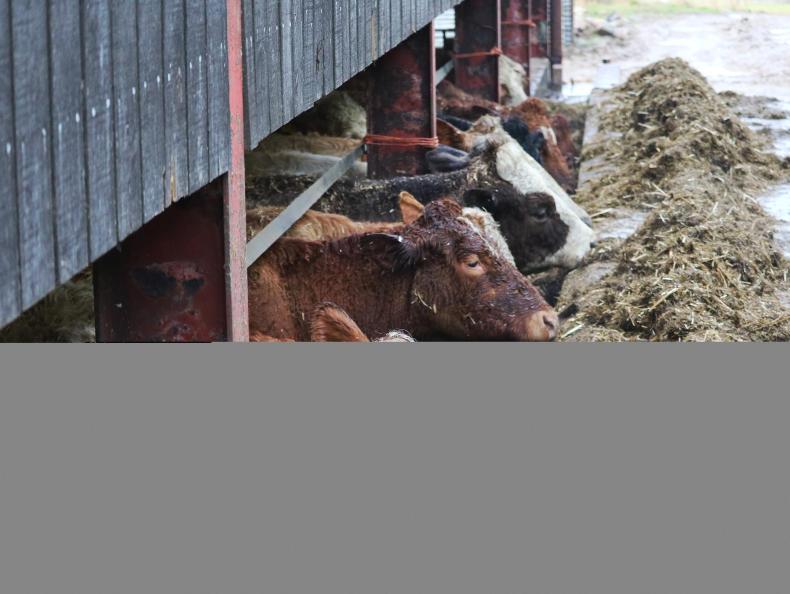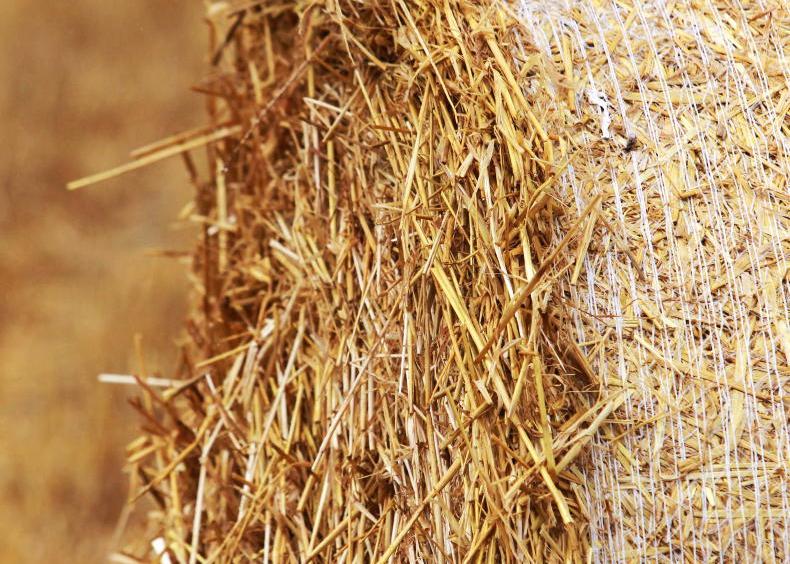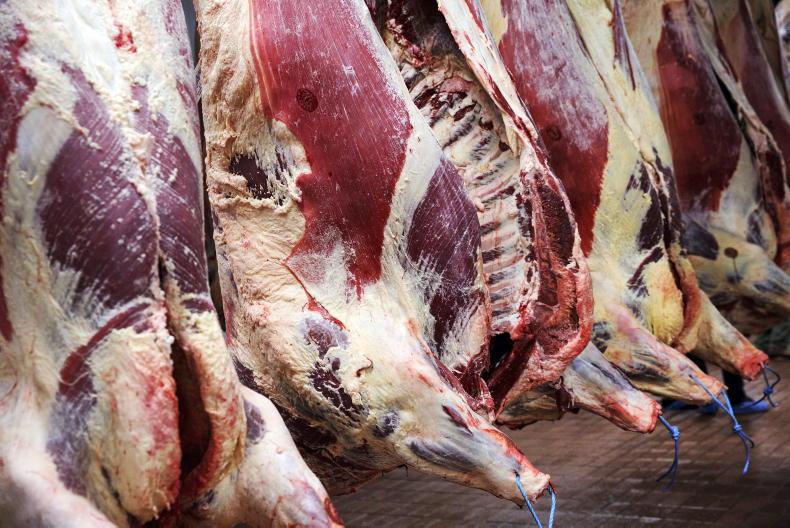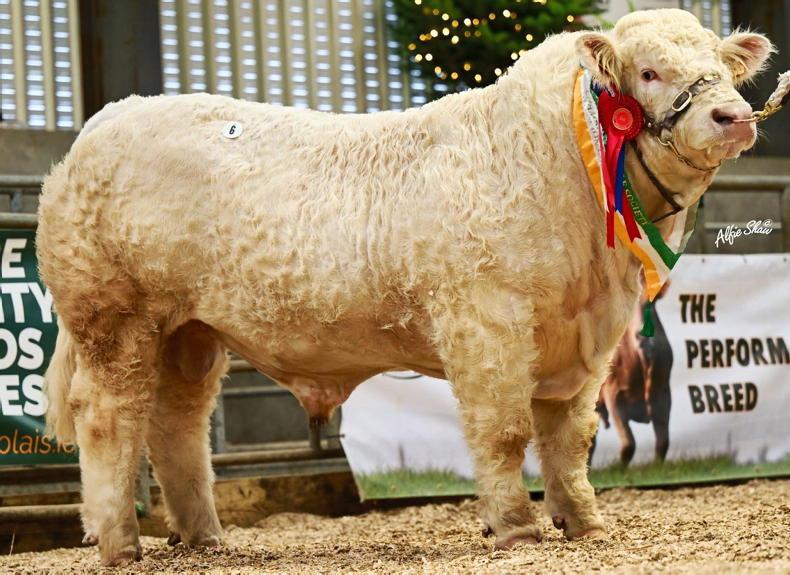Our forage crops have done well this year. The dry cows finished the Swift just after Christmas and as the weather was so kind, we decided to keep them out for a while longer on a diet of straw and baled silage.
While we didn’t save anything in feed costs, we did save quite a bit in bedding. However, with the weather turning a bit and calving coming closer, they were finally housed in late January. They are now on a diet of pit silage and straw, with 100g of soya each to maximise colostrum quality ahead of calving.
Looking forward to the next calf crop, we will have to go bull shopping.
We are looking to replace one of the Charolais bulls and we’re currently looking at catalogues to identify a few candidates.
Sheep
The ewes are now on swedes pre-lambing.
During the drought we were considering cultivating out the turnips as they didn’t look up too much.
However, with some patience and a bit of rain, they are a bumper crop. While the ewes are grazing most of them, we are lifting some for the spring calves.
The ewes did graze the catch crop of forage rye, Italian ryegrass and vetch in late November and early December, meaning that we have a decent bit of grass rested for them once they lamb. The plan with the catch crop is to either graze the ewes or the autumn cows and calves on it during late March and early April.
When you are a man down for the winter, time becomes more precious
Once it has been grazed off, it will be ploughed down and put in to swedes for next winter.
We had a decent scan, with 282 ewes coming in at 189%.
They are due to start lambing on 1 April this year, which is ideal as Scott (our son) will be back from his trip to New Zealand by then.
Scott being away has also been great for concentrating our minds on some of the jobs that we do around the farm.
One cattle shed in particular is very awkward for feeding in and takes a lot of manual labour.
When you are a man down for the winter, time becomes more precious and we are going to change how we do things in there for next winter.
Replanting
The field that was in Swift is to be put back to grass. We are planning to put it down with a cover of Westerwolds to give us some silage from the field, meaning we at least get some use of it this season.
Planning ahead for next year, we will definitely be putting in Swift again where the cows were running out onto this winter
Looking back now, we are really glad that we took the opportunity to establish the extra forage crop and to put the fattest dry cows onto straw and syrup.
This has made a huge difference to not only our current forage supplies, but also to the actual cost of wintering.
Planning ahead for next year, we will definitely be putting in Swift again where the cows were running out onto this winter, and we are still considering whether to put in the catch crop – as the fields that it would go in to don’t lend themselves so well to it.
Adviser comment: Robert Gilchrist
With bull sales in full swing, several of our focus farms are looking at purchasing a new bull.
It is important when choosing a bull to identify one that matches with the direction that the herd is going, after all the bull is half the herd.
Firstly, is he to be a maternal or a terminal bull? EBVs to look at on maternal bulls include calving ease daughters and 200-day milk.
These are both good indicators of good maternal ability. Terminal bulls need more attention paid to growth rates and to calving ease direct.
The other key aspect is of course his structural soundness. Does he stand and walk comfortably, with no obvious issues?
Finally, there is the post-purchase treatment of the new bull.
While isolation is a key part of health planning, giving him a view of other stock is a good way to help him settle. It is also key to change his diet over gently.
Often bulls have been well fed to reach sale condition and to bring him home and immediately expect him to adapt to a lower plane of energy is asking for trouble.
Give him six to eight weeks to transition from a concentrate-based ration over to a forage-based ration to get him ready to go to work.
There are many other points around purchasing a bull and QMS has a handy guide available at: www.qmscotland.co.uk
Our forage crops have done well this year. The dry cows finished the Swift just after Christmas and as the weather was so kind, we decided to keep them out for a while longer on a diet of straw and baled silage.
While we didn’t save anything in feed costs, we did save quite a bit in bedding. However, with the weather turning a bit and calving coming closer, they were finally housed in late January. They are now on a diet of pit silage and straw, with 100g of soya each to maximise colostrum quality ahead of calving.
Looking forward to the next calf crop, we will have to go bull shopping.
We are looking to replace one of the Charolais bulls and we’re currently looking at catalogues to identify a few candidates.
Sheep
The ewes are now on swedes pre-lambing.
During the drought we were considering cultivating out the turnips as they didn’t look up too much.
However, with some patience and a bit of rain, they are a bumper crop. While the ewes are grazing most of them, we are lifting some for the spring calves.
The ewes did graze the catch crop of forage rye, Italian ryegrass and vetch in late November and early December, meaning that we have a decent bit of grass rested for them once they lamb. The plan with the catch crop is to either graze the ewes or the autumn cows and calves on it during late March and early April.
When you are a man down for the winter, time becomes more precious
Once it has been grazed off, it will be ploughed down and put in to swedes for next winter.
We had a decent scan, with 282 ewes coming in at 189%.
They are due to start lambing on 1 April this year, which is ideal as Scott (our son) will be back from his trip to New Zealand by then.
Scott being away has also been great for concentrating our minds on some of the jobs that we do around the farm.
One cattle shed in particular is very awkward for feeding in and takes a lot of manual labour.
When you are a man down for the winter, time becomes more precious and we are going to change how we do things in there for next winter.
Replanting
The field that was in Swift is to be put back to grass. We are planning to put it down with a cover of Westerwolds to give us some silage from the field, meaning we at least get some use of it this season.
Planning ahead for next year, we will definitely be putting in Swift again where the cows were running out onto this winter
Looking back now, we are really glad that we took the opportunity to establish the extra forage crop and to put the fattest dry cows onto straw and syrup.
This has made a huge difference to not only our current forage supplies, but also to the actual cost of wintering.
Planning ahead for next year, we will definitely be putting in Swift again where the cows were running out onto this winter, and we are still considering whether to put in the catch crop – as the fields that it would go in to don’t lend themselves so well to it.
Adviser comment: Robert Gilchrist
With bull sales in full swing, several of our focus farms are looking at purchasing a new bull.
It is important when choosing a bull to identify one that matches with the direction that the herd is going, after all the bull is half the herd.
Firstly, is he to be a maternal or a terminal bull? EBVs to look at on maternal bulls include calving ease daughters and 200-day milk.
These are both good indicators of good maternal ability. Terminal bulls need more attention paid to growth rates and to calving ease direct.
The other key aspect is of course his structural soundness. Does he stand and walk comfortably, with no obvious issues?
Finally, there is the post-purchase treatment of the new bull.
While isolation is a key part of health planning, giving him a view of other stock is a good way to help him settle. It is also key to change his diet over gently.
Often bulls have been well fed to reach sale condition and to bring him home and immediately expect him to adapt to a lower plane of energy is asking for trouble.
Give him six to eight weeks to transition from a concentrate-based ration over to a forage-based ration to get him ready to go to work.
There are many other points around purchasing a bull and QMS has a handy guide available at: www.qmscotland.co.uk









SHARING OPTIONS